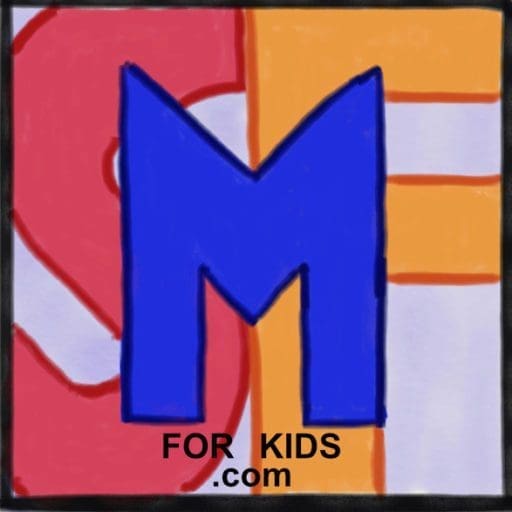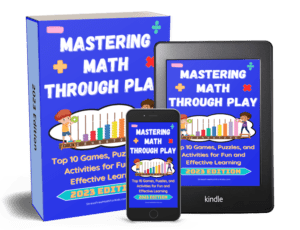It’s kind of funny to me that I have had this site for over 4 years without ever writing a post about my math mantras. Recently a child said to me “You say that a lot” when I said “Math is all about patterns.” Why yes, yes, I do say that a lot. It’s the first rule of math!
I have written about all of these things before but wanted to put them in one post and link the other places I have talked about them in more detail.
Math is everywhere!
The very first post I wrote for this site was called What Is Most Important In Math? Click the link to read it in full, but basically it says that a child’s mindset is the most important thing! We need to show kids that math is not just an isolated school subject (that many of them find frustrating) but something they already use every day in all the things that they love.
I talk about this with every new student and start every new school year and every new math group with this idea. Some activities I have done with groups include:
- making collages of pictures where they see math (the last time I did this a child said “There’s some kind of math in almost every picture!”)
- watching the video Donald in Mathmagic Land and having kids draw pictures of the different ways they saw math (as well as other ways it made them think of)
- challenging kids to tell me a favorite activity that involves no math (they love trying to stump me but it hasn’t happened yet)
Math is all about patterns.
As I wrote in my post Building On Strengths In Teaching Math, “very often the same children who struggle with “school math” (heavy on word problems and numerical calculations) are very strong spatially and visually.” What many of them (and even some teachers) don’t realize is that all math concepts follow patterns that can be expressed spatially and visually.
The picture below is one activity I do where kids color multiples on a hundreds chart and observe the patterns.

One of my absolute favorite enrichment lessons is on the Fibonacci sequence and the patterns of math in nature.
We use patterns of ten.
Our base ten system uses patterns of ten. As I wrote in this post, place value is the foundational concept of elementary math! Almost every child I meet who struggles in math (unless it is rooted in a reading problem) does not understand place value. Once kids truly understand place value and how those patterns of ten work, the idea of how numbers get larger and smaller is solidified. Calculations become easy at any level. The “friends of ten” they learn in kindergarten become the basis of all larger calculations. Right Start math is one of my favorite curriculums because it uses the abacus (their version which is made like a rekenrek with five blue and five yellow beads on each wire) to help kids visualize all numbers in fives and tens. To learn more about their programs (including tutoring books) click the banner below.


Big numbers work the same way small numbers do.
What happens in the ones place happens in all the places.
This is a more specific version of the above statement. I learned this one from Kimberly Rimbey at her CAMT session The Ten Frame Grows Up. I loved it so much I added it to my list.
There is more than one way to figure out an answer.
One of my favorite stories to tell is of the second grader who had never been taught to subtract with regrouping. He figured out how to subtract multi digit numbers by using negatives instead. I asked if he had ever shown his regular teacher. He said, “I tried to but she just said it wouldn’t work.” Well, of course it works! And so do many other non traditional ways of solving problems. I really love seeing math posts where someone asks “What goes on in your head when you solve this problem?” and there are dozens of different answers. (Learning Math With Howie Hua posts these often) Make sure you give students opportunities to solve problems in different ways, to try different ways of solving even if they aren’t sure they will work, and to discuss their thinking. Number talks are a great strategy. Math puzzles are another one.

My math mantras as listed above are the foundation for all of my math instruction, and the concepts I keep coming back to. I repeat them often enough that I start hearing students say them too!



